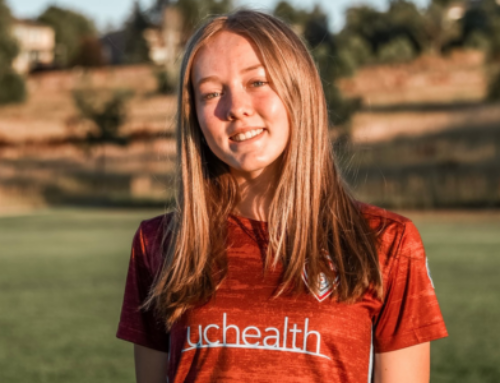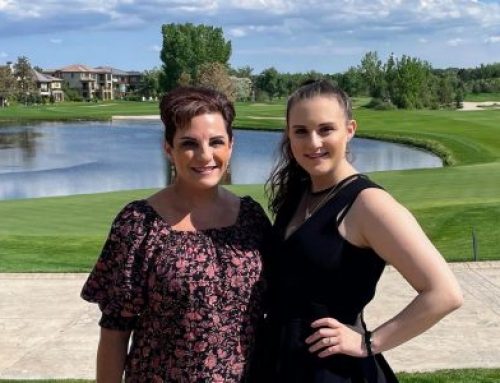By Marianne Williams
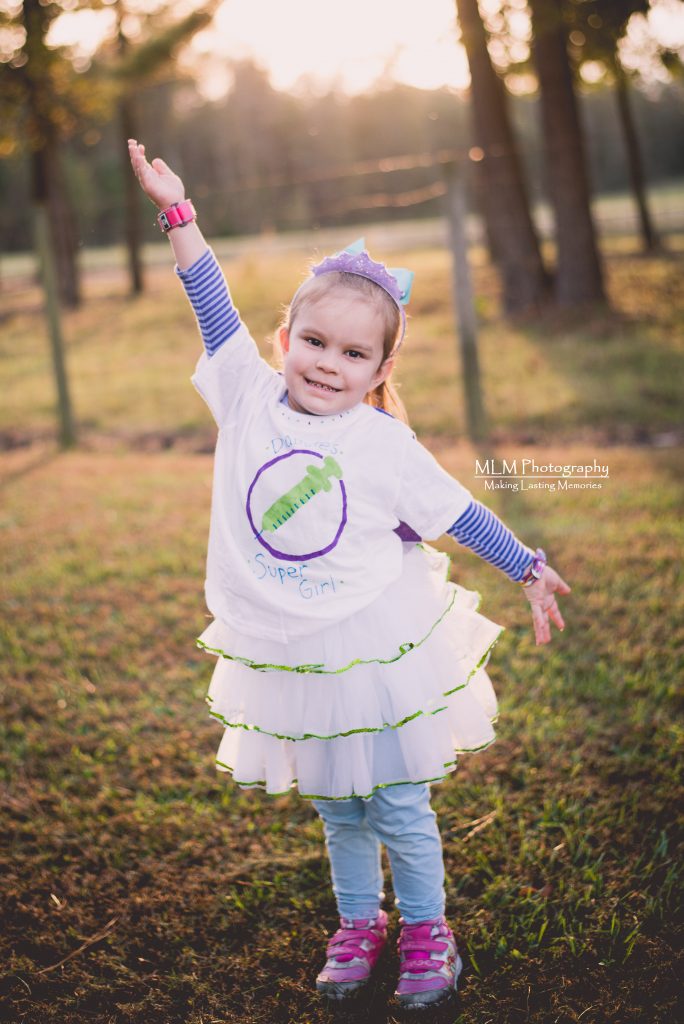 From the moment the pediatrician informed me of the diagnosis I knew I had to be strong. I knew my reaction would dictate my child’s reaction and feelings. I had to be calm and brave if I was going to expect the same from her. As I clung to the hope that somehow the doctor was wrong, I decided to just take it as it comes. I wasn’t going to panic. I’d understand more at the hospital. The faster I learned what I needed to know, the faster we could get home to our real lives.
From the moment the pediatrician informed me of the diagnosis I knew I had to be strong. I knew my reaction would dictate my child’s reaction and feelings. I had to be calm and brave if I was going to expect the same from her. As I clung to the hope that somehow the doctor was wrong, I decided to just take it as it comes. I wasn’t going to panic. I’d understand more at the hospital. The faster I learned what I needed to know, the faster we could get home to our real lives.
My internal dialog the entire ride to the emergency room was a back and forth between “Why not ME?” and “It is what it is.” I never asked “Why her?” because I felt like saying so was saying I thought someone else should have it instead. I didn’t want ANY child to have it so instead I asked, “Why not ME?” My grandmother had type 1 and I have been overweight most of my life. I honestly expected to hear this diagnosis for years, but from my doctor. I was furious my 4 year old was the one who had it. I also realized that no matter how angry I was, there was no one to blame. I did nothing wrong. I couldn’t have known or prevented her onset. No one caused it; no one made a mistake. Although I really wanted to be angry, without a target for my rage it would destroy me. “It is what it is” I repeated over and over. All I could do was accept it, learn all I could about the disease and be there for my daughter.
I was so thankful it was diabetes. Yes, thankful! Of all the diseases, conditions or disabilities my child could have, she had one that was manageable. I thought of my friend whose five year old was just diagnosed with leukemia. A diabetes diagnosis seemed minor comparatively. Diabetes is treatable and people live long lives with the disease.
Her disease would not limit her choices in life. She could still be anything, do anything and experience anything she chose. I was thankful for her pediatrician who also happened to have type 1 since she was five. Who better to help me care for this precious child? I was thankful for the time it gave me with her one on one in the hospital. We rarely get time like that and the disease continues to enable us to spend more intimate time together. I am thankful.
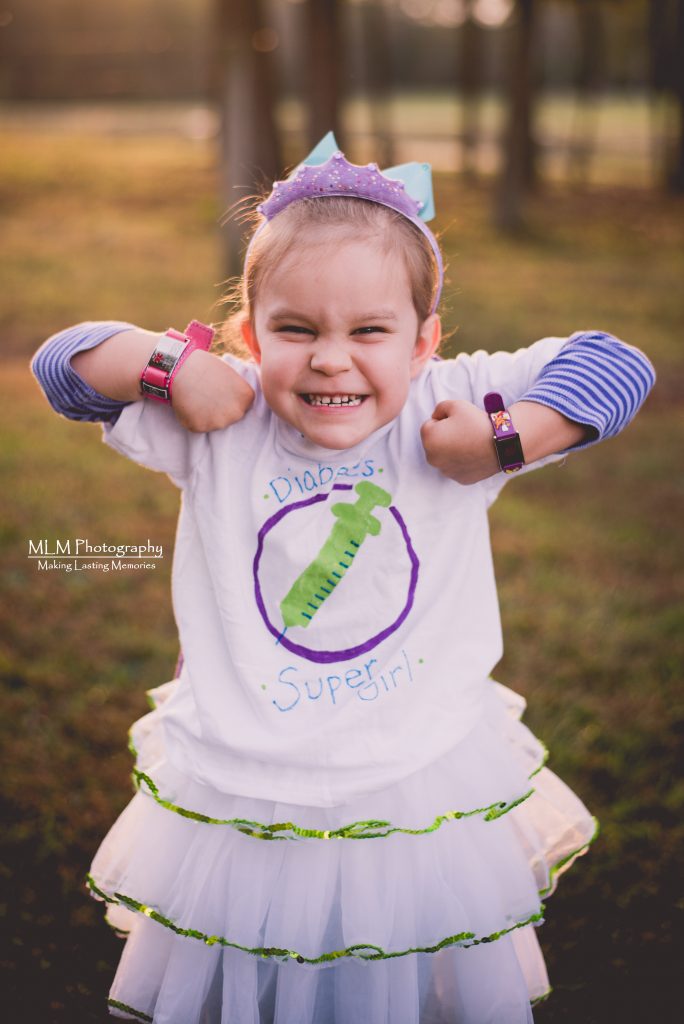 In the ER, when they placed the hospital bracelet on Julia’s arm, it reminded me of the cuffs Wonder Woman wears. I immediately saw an opportunity to empower my sweet child and the Diabetes Super Girl was born. She is brave and strong, tough and smart. With a giggle, a growl and flexing of muscles, Julia took on the identity. I didn’t want her to feel like a victim of the disease, rather a super girl with the power to kick diabetes’ butt.
In the ER, when they placed the hospital bracelet on Julia’s arm, it reminded me of the cuffs Wonder Woman wears. I immediately saw an opportunity to empower my sweet child and the Diabetes Super Girl was born. She is brave and strong, tough and smart. With a giggle, a growl and flexing of muscles, Julia took on the identity. I didn’t want her to feel like a victim of the disease, rather a super girl with the power to kick diabetes’ butt.
Along the way I found other opportunities to ease my daughter into her new life and allow her to take charge of her disease. I explained what was happening inside her body and why she needed insulin. I never allowed anyone to do anything to her without a full explanation. I wanted Julia to understand what they were going to do and why. I was honest about any pain she may experience, but also made it clear that the procedures were mandatory.
I asked the doctors and nurses to call the insulin her ‘medicine’ instead of her ‘shots’. I didn’t want her to associate what she was getting with the more painful and larger needles of immunizations. I also wanted her to see insulin as medicine; something that helps your body. By the time we left the hospital we were calling them for what they were, but by then she understood the difference.
The Child Life staff at the hospital was amazingly knowledgeable on how to lessen the fear and apprehensiveness of a young child. Along with a small bear, they provided a toy doctor kit with a stethoscope, otoscope and blood pressure cuff. I asked if we could take it one step further and practice with some real diabetes supplies. They came through with an expended insulin pen and lancet device. My daughter’s confidence in the situation sky rocketed when she was able to use the device, my cell phone and a test strip to test her bear’s blood and the pen to deliver the insulin. She could care for ‘Blueberries’ the way I cared for her.
I continued to seek ways to empower her at home. At first she had an array of bandages and stickers to reward her for her bravery. The other children immediately became her ‘support’ and held her hand during shots. Even the 2 year old is eager to be Julia’s support and sits calmly beside her with his hand on her. We all clap or congratulate her on how tough she is.
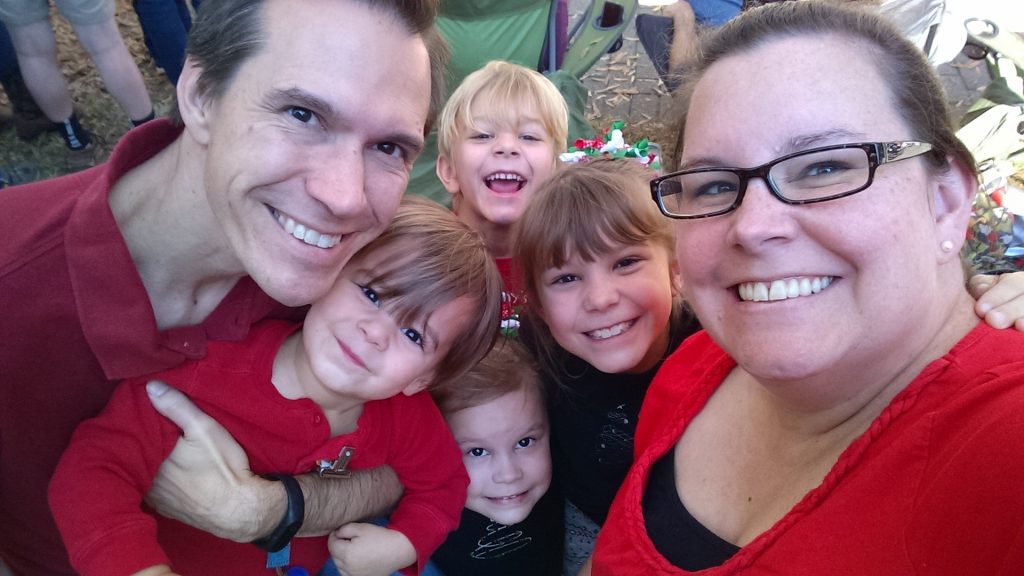 Although the children surround Julia with love and encouragement, I became concerned when they started calling her their “diabetic sister”. We had several conversations about diabetes being just a part of Julia. She is four years old, the third child in the family, she is diabetic, she has brown hair and she loves to dance and ride her bike. I wanted to make it clear that diabetes does not define her.
Although the children surround Julia with love and encouragement, I became concerned when they started calling her their “diabetic sister”. We had several conversations about diabetes being just a part of Julia. She is four years old, the third child in the family, she is diabetic, she has brown hair and she loves to dance and ride her bike. I wanted to make it clear that diabetes does not define her.
Five weeks after her diagnosis was Halloween. Julia dressed in her Diabetes Super Girl costume and proudly showed it off. She beamed when we told people her slogan, “Diabetes Super Girl: Taking on diabetes one day at a time!” That is truly what we are doing, taking it one day at a time. Learning all we can learn, listening to everyone with advice and experience while accepting that “it is what it is.” We continue to model strength and bravery while focusing on all we have to be thankful for…. especially our little superhero.
